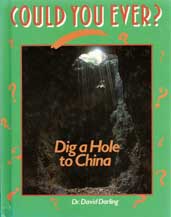COULD YOU EVER DIG A HOLE TO CHINA? 1. Clues from the Underworld
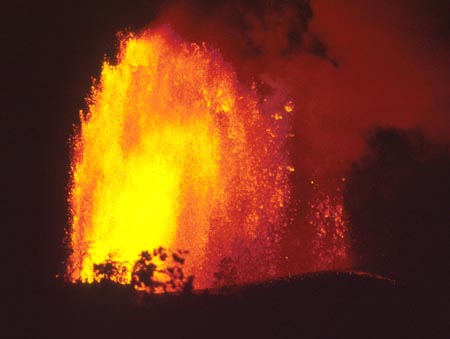
Figure 1. Fiery rock and hot ash shoot into the sky during an eruption of Mauna Loa, a 13,680-foot volcano in Hawaii.
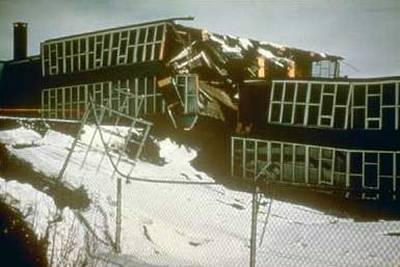
Figure 2. On March 27, 1964, the most powerful earthquake ever recorded in North America struck the area in and around Anchorage, Alaska, destroying large sections of the city.

Figure 3. This diagram shows the various layers inside the Earth, from the thin crust on the outside to the thicker mantle and core on the inside.
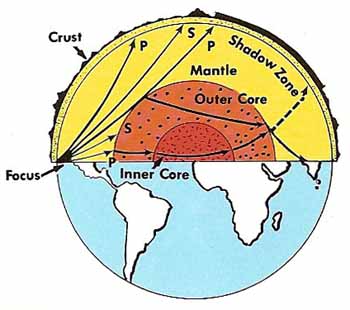
Figure 4. Starting from the focus, or source, of an earthquake in the Earth's crust, P waves and S waves move through the inner layers of the planet in different ways. Seismographs in the "shadow zone" of an earthquake detect few shock waves because of the way P and S waves are bent or deflected by the materials that make up the mantle and the core.
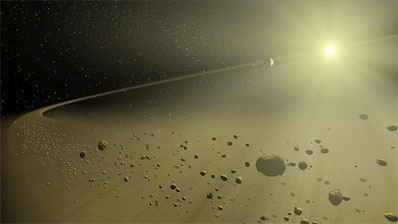
Figure 5. The planets formed from gas and dust that circled around the newborn Sun.
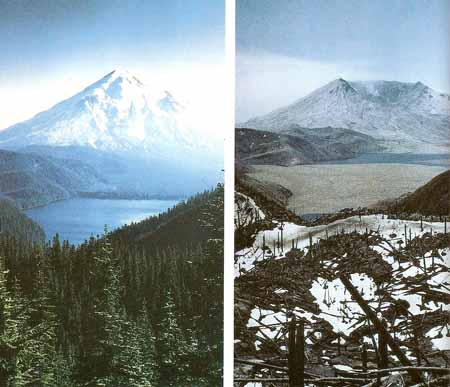
Figure 6. Mount St. Helens is a mountain formed by a series of volcanic eruptions over a long period of time. Before the 1980 eruption, the mountain (left) rose higher than it did afterward (right).
According to the ancient Greeks, the souls of the dead were ferried across the river Styx to the entrance of the Underworld. Here, they had to walk past the three-headed dog Cerberus before descending into the Earth.
Two regions of the Underworld were for people who had lived either ordinary or especially good lives. But a third, known as Tartarus, was reserved for those who had been wicked. A realm of fire and flame and everlasting torment, Tartarus was the Greek version of hell.
There were reasons why people, in the past, believed there were such places deep underground. Volcanoes often erupt around the Mediterranean, and in other parts of the world. Who would not be convinced by the choking ash and glowing rock from such outbursts that it was unbearably hot down there? The dark mouths of caves would also have been well known. For ancient peoples, it was then only a small step to imagining that caves were the entrances to a frightening, fiery underworld.
Today, though, scientists have built up a quite different picture of what it might be like inside the Earth. Much of the detail of this new picture has come from listening to the shock waves produced by EARTHQUAKES.
Layer Upon Layer
An earthquake happens when two huge slabs of rock near to the Earth's surface suddenly slip or slide against one another. In the area immediately above, the ground may tremble and buildings shake until they collapse. But using sensitive instruments, called SEISMOGRAPHS, the shock waves from an earthquake can be detected much farther away – even on the opposite side of the world.
When the earthquake waves pass through rock, their speed and course change as the rocks change. This allows scientists to probe the rocks deep inside the Earth by measuring how long it takes shock waves to travel from an earthquake to various points around the globe.
The results have provided a wealth of new information. We now know that the Earth is made up of layers, a bit like an onion. On the outside is a thin, hard shell of rock, known as the CRUST. This layer varies in thickness from about 3.7 miles to 37 miles. If a basketball was used to represent the Earth, then the crust would be no deeper than a postage stamp stuck to the ball's surface.
Immediately below the crust is a thick layer of hot, softer rock, 1,800 miles deep, called the MANTLE. This makes up more than four-fifths of our planet's volume. Finally, at the very center of the Earth is the CORE, an intensely hot, extremely dense ball, 2095 miles deep.
These findings raise an important question. How did the Earth come to be layered in this way?
Putting an Ear to the Earth
Scientists first used seismographs – instruments for recording shock waves in the Earth – at the end of the nineteenth century. They soon found that an earthquake sends out two main kinds of waves. The first, the primary (P) waves, travel by alternately squashing together and pulling apart like an accordion. This allows them to pass through not only hard rock, but gases and liquids as well.
The P waves are followed by secondary (S) waves. Because the S waves vibrate like a violin string from side to side, rather than along the direction of their motion, they can only travel through solids. The speed of both P and S waves becomes greater as the density of the rocks they pass through increases. Changes in density also cause the waves to bend.
By studying the results from seismographs located at different points around the globe, scientists have been able to learn what the Earth is like inside. As early as 1909, it became clear that there is a sharp boundary between the hard, lighter rocks of the crust and the softer, heavier rocks of the mantle below. Our planet's dense liquid core, which bends P waves but absorbs S waves, was discovered soon afterward.
By 1936, further studies had shown that the Earth's core was, in fact, divided into two parts. A liquid outer core, with a depth of about 1,245 miles, surrounded a solid inner core 850 miles deep. Since then, scientists have discovered that the mantle also consists of several different layers.
Earth-Building
More than 5 billion years ago, scientists believe, these was no Earth and no Sun. There was only a giant cloud of thinly spread gas and dust drifting among the stars.
Slowly, the cloud changed. At a certain place within, by chance, the gas and dust became thicker than elsewhere, causing clumps to form. Because their pull of gravity was slightly stronger than that of the rest of the cloud, the clumps steadily sucked in more matter and became even thicker. Deep inside them, the temperature rose higher and higher until the center of the clumps started to give off powerful rays of light and heat. In this way, a number of new stars were born – one of which was the Sun.
Along with light and heat, a fierce wind of particles blew from the surface of the young Sun. This drove away much of the loose gas and dust that remained in the space around it. But not all of the leftover cloud was lost. Some of it settled into a wide, fairly flat disk of gas and dust that circled the Sun like an enormous gramophone record.
It was now about 5 billion years ago. Over the next few hundred million years, the bits and gas and dust in the disk surrounding the Sun gradually stuck together. Little grains grew into larger ones. Pebble-sized lumps grew into mountain-sized chunks, and later into globes of matter thousands of miles across. These were the planets and their moons.
Far away from the Sun, where it was bitterly cold, it was possible for very large planets to form. In this region of the Solar System, the most plentiful substances were the lightweight gases, hydrogen and helium. At low temperatures, particles of hydrogen and helium move slowly enough that they can be captured and held by a growing planet. Outer worlds, such as Jupiter and Saturn, built up atmospheres of hydrogen and helium, tens of thousands of miles deep.
Nearer to the infant Sun, however, the temperature was much higher. It was too warm for planets in this region to hold light gases for very long. Instead, the four, innermost worlds – Mercury, Venus, Earth, and Mars – were formed from heavier and rarer substances. As a result, they did not become nearly as large as the huge outer planets.
About 93 million miles away from the Sun, our own planet took shape, A swirling storm of rock and metal particles rained onto its surface. As it grew, its pull of gravity increased. This intense, inward tugging crushed and heated the material of the new Earth so much that it eventually melted.
Fire and Water
If you mix cooking oil and water together in a jar, they will quickly separate again. Because water is heavier than oil, it sinks to the bottom of the container. The lighter oil floats to the surface.
A similar separation took place within the superheated, newborn Earth. Since it was completely molten, the heavier substances sank toward the center, while the lighter material rose toward the surface.
Heaviest of all the ingredients that made up the Earth were the metals iron and nickel. These sank as far as they could go, and formed a pure metal core. Around the core, heavy rocks gathered in a thick layer to make the mantle. Finally, the lightest rocks of all floated to the surface where, in time, they turned into a thin crust.
To begin with, even the crust was molten. The whole Earth was probably covered in an ocean of liquid rock that glowed orange like a coal fire. As the surface cooled, some of this rock hardened into dark, steaming slabs that floated on top of the fiery seas. Gradually, the slabs grew and merged to form islands of dry land.
About 4½ billion years ago, other changes began to occur. From the hot rocks inside the Earth, various gases rose to the surface and escaped. One of these was water vapor, the gas that water turns into when it boils or evaporates. Over thousands and thousands of years, the water vapor gathered as clouds. Then, it began to rain and rain, until a single great ocean covered the planet.
The Earth's Changing Face
Since that ancient time, the Earth has undergone many changes. Great masses of land have risen from the sea to form continents. Life, which first appeared in the ocean, has spread onto every part of the land. And even today, the processes of change continue. Volcanoes erupt, wind and water wear down old rocks and new mountains grow.
Almost all of our planet's activity over the past 4 billion years has taken place in and around the crust. The core and mantle, making up the bulk of the Earth, have remained much the same as they have always been. Yet it is from these deep regions inside our planet that the energy comes to move and continually reshape the surface.
From the core, heat rises through the mantle to a region just below the crust. For most of its depth, the mantle is probably quite stiff. But at the top there seems to be a layer of mantle rock that can move slowly, like thick syrup. Upon this partly liquid layer, the crust floats as if it were a raft.
The heat coming from the center of the Earth sets up currents in the molten rocks of the upper mantle. As these rocks drift slowly, they carry the crust above with them. But the crust, scientists have found, is not all in one piece. It is broken up into a number of large, separate parts known as PLATES. The movements of the liquid mantle below cause these plates to drift around and jostle one another – with some spectacular results.

